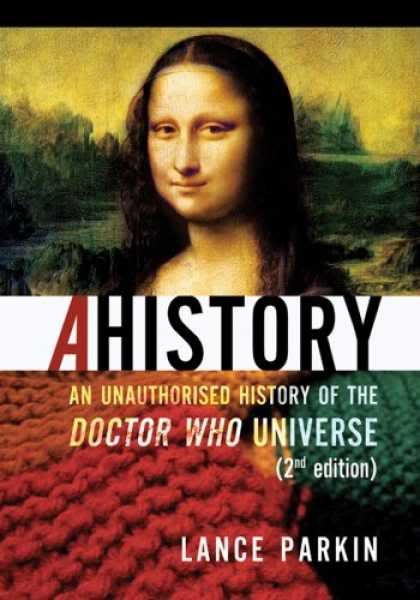
I love getting stuff in the mail...
Back in 1996, Doctor Who: A History of the Universe was published. This was an attempt to put all of the TV stories and novels up to that point into a coherent chronology, detailing the history of the universe as seen in Doctor Who from beginning to end.
In 2007, a second edition was published, now titled AHistory. Besides all material from the first edition, this new one also includes
- BBC Eighth Doctor and Past Doctors novels
- New Series TV episodes through Season 3
- New Series Adventures novels up to Wooden Heart
- Big Finish audio dramas up to #98: Frozen Time
- Torchwood Season 1 and novels
- Doctor Who Annual/Magazine comic strips
- Telos Publishing novellas
- The webcast remake of Shada featuring the Eighth Doctor
- The webcasts Death Comes to Time, Real Time, and The Scream of the Shalka
- The Sarah Jane Adventures pilot episode
While A History of the Universe was a helpful guide to place things in a set continuity, AHistory is much more problematical, taking another eleven years worth of widely varying material and attempting to add it in. Continuity has always been a hard issue to determine in the Doctor Who universe because of both the random time travel aspect of the series (the Doctor, in his travels, could potentially do something that alters or erases previous events), but mainly because the people involved have always been more focused on weaving entertaining stories rather than trying to memorize every little detail from a program that has lasted almost 46 years at this point.
This poses several serious problems in which stories in different media contradict others. Such examples include:
- The "death" of the Doctor at the end of his Seventh incarnation and the extinction of the Time Lords in Death Comes to Time.
- The fate of Ace: in the novels she leaves the Doctor to travel through time on her own; a still-teenaged Ace dies at the end of the comic strip Ground Zero; she inherits the Doctor's mantle and becomes a Time Lord herself in Death Comes to Time.
- The fate of Gallifrey and the Time Lords: in the Eighth Doctor novels the Doctor is forced to destroy Gallifrey to defeat Faction Paradox (a Time Lord voodoo/death cult); in the New Series, the Doctor is again forced to destroy Gallifrey, this time to defeat the Daleks at the end of the Time War.
- Two different Ninth Doctors: before the New Series happened, there was The Scream of the Shalka, an animated webcast featuring a very different Ninth Doctor played by Richard E. Grant.
- Human Nature takes place twice, first as a New Adventures novel featuring the Seventh Doctor and later as a New Series TV episode featuring the Tenth Doctor.
- Two different Doctors are in Pompeii on the day Vesuvius errupts: the Seventh (The Fires of Vulcan) and the Tenth (The Fires of Pompeii), but the Tenth does not show any concern of running into his earlier self.
In the audio play Neverland, it was established that the various media lines of the series - novels, audios, comic strips - each took place in their own separate continuities, based on the theory in quantum physics that when an event happens or a decision is made, every possible outcome happens and creates it's own timeline branching off from that point. To avoid confusion, I have personally adopted this outlook when dealing with continuity.
Although I do not agree with AHistory's attempt to put everything into one continuity, I still consider it an important reference book in helping to establish when stories take place, especially in cases when the date is not specifically given in a story. I also really like the format of this new edition: footnotes are now at the bottom of pages rather than crammed into the margins (as in the first edition); a handy table of contents lists every story included and their page numbers, plus a list of important features in the footnotes dealing with the various continuity issues.
If you are a well and truly obsessed Doctor Who fan (like me) and you're also a Continuity Nazi (again, like me), then this is a valuable volume that should make a great addition to your collection.